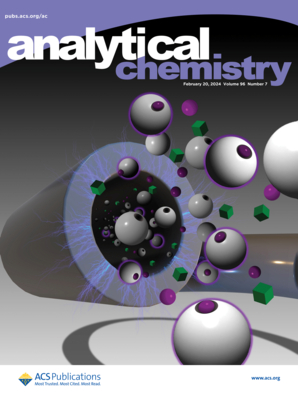Real-Time Fluorescence Aptasensor Based on Programmable Switch-Coupled Exponential Amplification Transduction for Ultrasensitive and Specific Vibrio parahemolyticus Determination.
IF 6.7
1区 化学
Q1 CHEMISTRY, ANALYTICAL
引用次数: 0
Abstract
The accurate and early detection of Vibrio parahemolyticus (V. parahemolyticus) is crucial for ensuring food safety and protecting consumer health. However, current detection methods face challenges in preventing the rapid transmission of V. parahemolyticus due to insufficient sensitivity and limited coverage. Herein, an aptamer-based real-time fluorescence biosensor was developed, termed CAPANA (a catalytic nucleic acid exponential cascade amplification network-powered magnetic aptasensor) for simple and ultrafast sensitive diagnosis of V. parahemolyticus. By integrating the programmable truncated aptamer and the EXPAR-TtAgo cascade reaction, the CAPANA system dexterously converts the epitope recognition events of V. parahemolyticus into fluorescence signals. The CAPANA system can not only address the low sensitivity of the single aptasensor transduction and the interference from nonessential bases in amplicons but also maintain dynamic balance between repeated regeneration of target and exponential signal amplification. Moreover, considering the potential variations in reaction conditions among multiple enzymes and the possible impacts of their interactions on reaction efficiency and specificity, engineering improvements in the CAPANA system can optimize coordination and complexity among multiple enzymes. The CAPANA system demonstrated a 60.61-fold higher detection efficacy for V. parahemolyticus than the TtAgo-based cleavage method. The detection limit achieved is 100 CFU/mL, and the rapid results take only 40 min. This system was confirmed by identifying contaminated aquatic products and challenged with ELISA, qPCR, or culture methods. This work enriches the arsenal of signal transduction based on aptamer epitope recognition, highlighting its potential as a precision on-site diagnostic tool for pathogenic bacteria.基于可编程开关耦合指数扩增转导的实时荧光适体传感器用于超灵敏和特异的副溶血性弧菌检测。
准确、早期发现副溶血性弧菌对确保食品安全和保护消费者健康至关重要。然而,目前的检测方法在防止副溶血性弧菌的快速传播方面面临挑战,因为灵敏度不足和覆盖范围有限。本研究开发了一种基于核酸指数级联扩增网络驱动的磁感应体实时荧光生物传感器CAPANA(催化核酸指数级联扩增网络驱动的磁感应体),用于副溶血性假体的简单、超快速灵敏诊断。CAPANA系统通过集成可编程截断适配体和EXPAR-TtAgo级联反应,灵巧地将副溶血弧菌表位识别事件转化为荧光信号。CAPANA系统既能解决单个适体传感器转导的低灵敏度和扩增子中非必需碱基的干扰,又能在目标的重复再生和指数信号放大之间保持动态平衡。此外,考虑到多种酶之间反应条件的潜在差异以及它们之间的相互作用对反应效率和特异性的可能影响,对CAPANA系统进行工程改进可以优化多种酶之间的协调性和复杂性。CAPANA系统对副溶血性弧菌的检测效率比基于ttago的切割方法高60.61倍。检测限为100 CFU/mL,快速结果仅需40 min。该系统通过鉴定受污染的水产品并采用ELISA、qPCR或培养方法进行验证。这项工作丰富了基于适体表位识别的信号转导库,突出了其作为致病菌精确现场诊断工具的潜力。
本文章由计算机程序翻译,如有差异,请以英文原文为准。
求助全文
约1分钟内获得全文
求助全文
来源期刊

Analytical Chemistry
化学-分析化学
CiteScore
12.10
自引率
12.20%
发文量
1949
审稿时长
1.4 months
期刊介绍:
Analytical Chemistry, a peer-reviewed research journal, focuses on disseminating new and original knowledge across all branches of analytical chemistry. Fundamental articles may explore general principles of chemical measurement science and need not directly address existing or potential analytical methodology. They can be entirely theoretical or report experimental results. Contributions may cover various phases of analytical operations, including sampling, bioanalysis, electrochemistry, mass spectrometry, microscale and nanoscale systems, environmental analysis, separations, spectroscopy, chemical reactions and selectivity, instrumentation, imaging, surface analysis, and data processing. Papers discussing known analytical methods should present a significant, original application of the method, a notable improvement, or results on an important analyte.
 求助内容:
求助内容: 应助结果提醒方式:
应助结果提醒方式:


